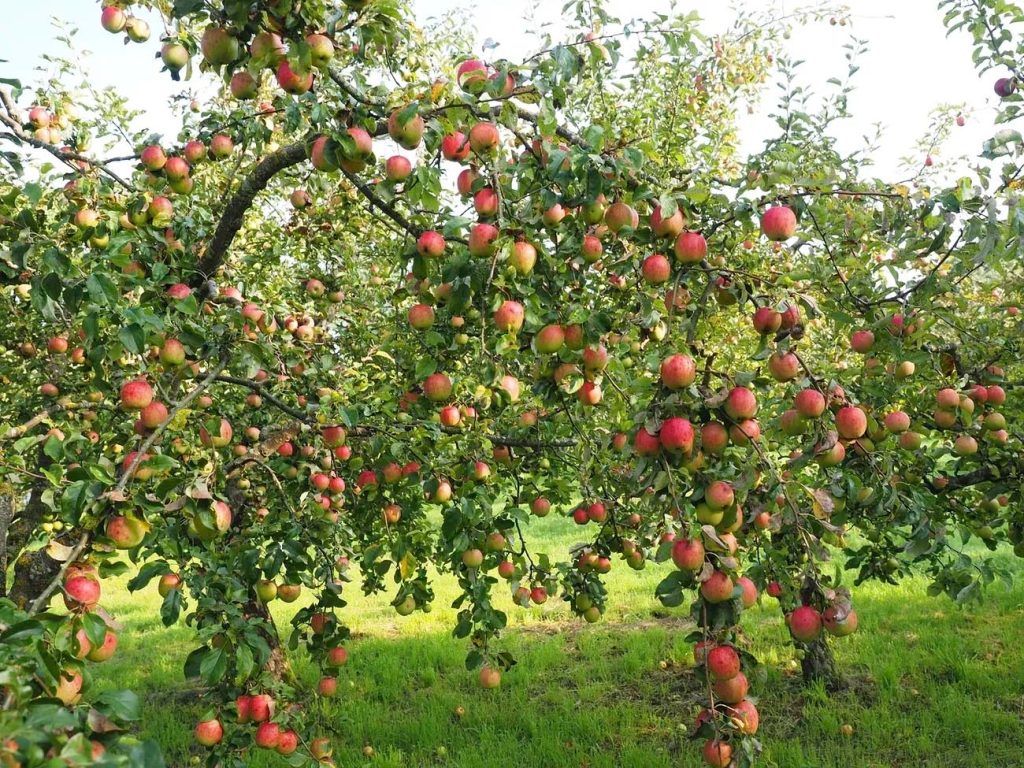Precision Pruning for Fruit Trees: How to Trim Your Trees for Maximum Yield, Health, and Aesthetic Appeal Throughout the Growing Seasons
February 10, 2025|
To maintain the health, maximize yield, and enhance the aesthetic appeal of your fruit trees, precision pruning is essential. Start by removing dead, diseased, or damaged branches to improve air circulation and sunlight penetration. Use techniques like central leader training to develop a strong central trunk and balanced scaffold branches, and thinning cuts to direct the tree’s energy towards productive areas. Prune during the dormant season, typically from December to February, to promote strong scaffold branches and vigorous shoot growth. Regular pruning, especially in the top of the tree, helps control size and guarantees better fruit production. For more detailed guidance on optimizing your fruit trees, continue with the specific pruning methods and timing.  Precision Pruning for Fruit Trees: How to Trim Your Trees for Maximum Yield, Health, and Aesthetic Appeal Throughout the Growing SeasonWhen pruning your fruit trees, it’s vital to understand the various techniques that can enhance yield, health, and aesthetic appeal. You’ll need to master methods like thinning, which removes select branches to improve airflow and sunlight penetration, and renewal pruning, which replaces old, unproductive branches with new growth. By applying these techniques at the right time, typically during the dormant season, you can substantially boost your tree’s productivity and overall well-being. Introduction to Pruning Fruit TreesPrecision pruning is vital for maintaining the health and productivity of your fruit trees. By removing dead or diseased branches, you promote better airflow and sunlight penetration, which are essential for healthy growth and ideal fruit production. Regular pruning, especially during the dormant season, helps create a strong tree structure, encourages the growth of new shoots, and protects your tree against diseases and damage from hazardous branches. Why Precision Pruning is Essential for Fruit TreesPruning your fruit trees is a crucial step in maintaining their health, productivity, and aesthetic appeal. Precision pruning enhances tree health, boosts fruit production, and improves tree structure. Here are key reasons why precision pruning is essential:
Pruning Techniques for Fruit TreesWhen pruning your fruit trees, it’s vital to employ specific techniques to guarantee maximum yield, health, and aesthetic appeal. Start by removing all dead, broken, and diseased branches, as well as sucker growth around the base of the tree, to reveal the healthy structure underneath. Next, decide on the desired height and shape of your tree, and plan to reduce it over several years to avoid stressing the tree and to maintain ideal sun exposure and air circulation. Effective Pruning Methods for Healthy and Productive TreesTo maintain the health and productivity of your fruit trees, mastering several key pruning methods is essential. Here are some effective techniques: Key Pruning Methods
Maximizing Yield Through PruningWhen you prune your fruit trees, you’re not just shaping their structure; you’re directly influencing their fruit production. By removing dead, diseased, or crossing branches, you improve light penetration and air circulation, which are essential for healthy fruit development. Proper pruning techniques, such as thinning cuts and maintaining a balanced tree form, help direct the tree’s energy towards producing more and better-quality fruit. How Pruning Affects Fruit Production and Tree StructurePruning fruit trees is a crucial step in enhancing both fruit production and the overall structure of the tree. By removing dead, diseased, or overcrowded branches, you improve air circulation, sunlight penetration, and direct the tree’s energy towards productive areas. Key benefits of precise pruning include:
Pruning for Tree Health and Aesthetic AppealWhen pruning your fruit trees, you need to balance health, aesthetics, and yield. Removing dead, diseased, or damaged branches improves air circulation and sunlight penetration, which are vital for healthy growth and fruit production. By focusing on the center of the tree to guarantee ideal air circulation and sunlight exposure, you can prevent diseases and promote vigorous shoot growth. This approach also helps maintain an aesthetically pleasing tree structure, avoiding tangled branches and weak crotch angles. Using the right tools, such as hand shears, loppers, and pruning saws, makes the process more efficient and helps you achieve the desired balance between health, appearance, and yield. Balancing Health, Aesthetics, and Yield in PruningTo balance health, aesthetics, and yield in pruning your fruit trees, it is crucial to adopt a systematic approach that addresses multiple aspects of the tree’s development. Key points to ponder:
|
|